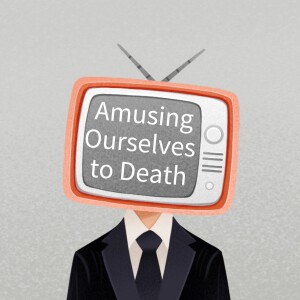Episodes

Thursday Nov 02, 2023
Thursday Nov 02, 2023
Chapter 1:Summary of Know My Name book
Know My Name is a memoir written by Chanel Miller, who was sexually assaulted by Brock Turner on the Stanford University campus in 2015. The book chronicles Miller's journey from being known as "Emily Doe" during the trial to reclaiming her identity and her voice as Chanel Miller.
Miller begins by describing her relationship with her family, her love for art, and her aspirations before the assault. She vividly recounts the night of the assault, the immediate aftermath, and the emotional and physical toll it takes on her life. Miller also shares her experience of going through the legal process, the trial, and the media attention that followed.
Throughout the book, Miller delves into the impact of the assault on her mental health, relationships, and identity. She explores the various ways in which she tries to heal, from therapy and support groups to writing and art. Miller also reflects on the societal attitudes towards sexual assault, victim-blaming, and the power dynamics that perpetuate such crimes.
Know My Name not only sheds light on Miller's personal experience but also highlights the larger issues surrounding sexual assault and the judicial system. Through her powerful and eloquent writing, Miller aims to challenge societal norms and ignite conversations about the ways in which survivors are treated. Ultimately, the book serves as an empowering testament to Miller's resilience, resilience, and determination to reclaim her identity and confront the justice system that failed her.
Chapter 2:the meaning of Know My Name book
"Know My Name" is a memoir written by Chanel Miller, the survivor in the high-profile Stanford sexual assault case. The phrase "Know My Name" is a powerful declaration and reclaiming of her identity. It signifies her desire to be seen and known for who she truly is, beyond being identified solely as the victim or with anonymous titles like "Emily Doe," as she was referred to during the trial. It also symbolizes her courage to share her story publicly and advocate for survivors of sexual assault, and to encourage others to recognize the humanity and individuality of survivors.
Chapter 3:Know My Name book chapters
Chapter 1: Introduction
In the introduction, Chanel Miller sets the tone for her memoir and shares her thoughts on reclaiming her identity and voice. She discusses the importance of sharing her story and why she chose to write this book.
Chapter 2: Before
Miller reflects on her upbringing and her close-knit family. She describes her childhood, her parents' divorce, and her experiences growing up as a Korean-American in a predominantly white community. She also discusses her passion for art and how it became a form of self-expression for her.
Chapter 3: Winter Formal
This chapter delves into the night of the sexual assault, known as the Winter Formal. Miller recounts the events leading up to her assault, her interactions with her friends, and her eventual encounter with the perpetrator. She shares her emotions and feelings of confusion and trauma during this time.
Chapter 4: Becoming Brave
Miller discusses her decision to report the assault to the authorities and the challenges she faced during the legal process. She shares her experiences with law enforcement, the court system, and the media, highlighting the insensitive comments and victim-blaming she encountered.
Chapter 5: The Investigation
In this chapter, Miller explores the challenges she faced during the investigation process. She recounts the events leading up to the arrest of the perpetrator and the emotional toll it took on her. She also describes the support she received from her family and friends during this time.
Chapter 6: The Trial
Miller provides a detailed account of the trial, from the selection of the jury to the presentation of the evidence. She talks about the cross-examinations and the tactics used by the defense team to discredit her. Miller shares her feelings of frustration and disappointment with the judicial system.
Chapter 7: The Aftermath
After the trial, Miller describes the impact of the assault on her life. She discusses her struggles with PTSD, anxiety, and depression, as well as her search for healing and reclaiming her identity. She also reflects on the importance of support and self-care during this process.
Chapter 8: Miracle
Miller shares her journey towards finding strength and taking back control of her life. She discusses her decision to publicly share her story and advocate for survivors of sexual assault. She talks about her involvement in legislation efforts and her work towards changing the conversation around sexual assault.
Chapter 9: Reflection
In the final chapter, Miller reflects on her experiences and the lessons she has learned throughout her journey. She discusses the power of storytelling and the importance of empathy and understanding. She concludes by encouraging survivors to find their voice and pursue justice and healing.
Chapter 4: Quotes of Know My Name book
"I am the sole author of my story and anyone who tries to take that from me will never experience what it truly feels like to know my name."
"Survivors need to hear: 'I believe you,' 'It's not your fault,' and 'You are not alone.'"
"My assault made me recognize the urgency of our collective responsibility to dispel shame, normalize healing, and instill new structures that protect survivors and privilege their voices."
"I am a survivor. I have survived, through strength and resilience, through empathy and compassion, and through the unwavering belief that my voice matters."
"My body was violated, but my spirit could not be silenced."
"Sexual assault is not just a personal tragedy; it is a societal disease that must be confronted and eradicated through education, empathy, and accountability."
"The healing journey is not linear, but every step forward is an act of courage."
"I refuse to let shame and secrecy define me. I will not be silenced, invisible, or marginalized."
"To share our stories is to humanize the statistics, to amplify surviving voices, and to demand a change in the status quo."
"Every survivor deserves a world where their pain is seen, their voice is heard, and their worth is unquestioned."

Wednesday Nov 01, 2023
Wednesday Nov 01, 2023
Chapter 1:what is Barbarians At The Gate book about
"Barbarians at the Gate" is a book by Bryan Burrough and John Helyar that was published in 1990. It is a detailed account of the leveraged buyout (LBO) of the American tobacco and food conglomerate RJR Nabisco. The book primarily focuses on the bidding war between two Wall Street giants, Kohlberg Kravis Roberts & Co. (KKR) and the management team led by CEO F. Ross Johnson.
The authors provide an in-depth narrative of the events leading up to and during the buyout of RJR Nabisco, which took place in the late 1980s. They describe the power struggle, financial maneuvering, and intense competition between KKR and Johnson's team. The book also delves into the motivations and strategies employed by the various players involved in the deal.
"Barbarians at the Gate" paints a vivid picture of the corporate culture and excesses of the 1980s, when large-scale leveraged buyouts were common. The story showcases the greed, ambition, and egos of the individuals involved, as well as the broader economic and social consequences of such deals.
The book received critical acclaim for its detailed research and engaging storytelling. It offers insights into the world of high finance and corporate takeovers while illuminating the events and personalities behind one of the most iconic and significant deals in American business history.
Chapter 2:Author of Barbarians At The Gate book
Bryan Burrough is an American author and journalist, acclaimed for his investigative reporting and non-fiction writing. Born on August 13, 1961, in Tennessee, Burrough gained recognition for his book "Barbarians at the Gate: The Fall of RJR Nabisco," co-written with John Helyar.
Published in 1990, "Barbarians at the Gate" is a critically acclaimed account of the leveraged buyout of RJR Nabisco, a seminal event in the history of American business. It delves into the corporate greed, backroom deals, and power struggles that characterized the bidding war for the food and tobacco company.
Before writing "Barbarians at the Gate," Burrough gained experience as a journalist, working for The Wall Street Journal as an investigative reporter. During his time at the paper, he covered a range of topics, including white-collar crime and drug trafficking.
Burrough has authored several books, exploring different aspects of American history and society. Some of his notable works include "Public Enemies: America's Greatest Crime Wave and the Birth of the FBI," "Days of Rage: America's Radical Underground, the FBI, and the Forgotten Age of Revolutionary Violence," and "The Big Rich: The Rise and Fall of the Greatest Texas Oil Fortunes."
Known for his meticulous research and compelling storytelling, Burrough's works have received critical acclaim and have been widely read. He is highly regarded for his ability to unravel complex events and bring them to life through vivid narratives.
Bryan Burrough continues to be an influential writer and journalist, shedding light on significant events and capturing the essence of American history through his books.
Chapter 3:why is Barbarians At The Gate book worth reading
Barbarians At The Gate by Bryan Burrough is worth reading for several reasons:
Gripping narrative: The book tells the thrilling story of the leveraged buyout of RJR Nabisco, one of the largest corporate takeovers in history. The narrative is fast-paced, filled with high-stakes power struggles, intricate financial maneuvers, and the mind-boggling amounts of money involved. It reads like a captivating financial thriller that keeps you engrossed until the very end.
Insight into Wall Street culture: The book offers a deep dive into the world of investment banking and the cutthroat nature of Wall Street during the 1980s. It explores the excessive greed, aggressive tactics, and ego-driven behavior of the players involved in the RJR Nabisco takeover, providing a fascinating glimpse into the inner workings of high finance.
Business lessons: Barbarians At The Gate is not just a tale of money and excess. It also sheds light on complex financial concepts involved in the deal, such as leveraged buyouts, junk bonds, and hostile takeovers. Through this, readers can gain a better understanding of the dynamics of corporate finance and the risks and rewards associated with it.
Historical significance: The RJR Nabisco takeover was a watershed moment in the world of finance, marking the peak of the 1980s wave of corporate raiders and leveraged buyouts. The book serves as a historical document that captures a pivotal time in Wall Street history and its impact on the business landscape.
Engaging storytelling: Bryan Burrough's writing style is engaging and accessible, making complex financial concepts and jargon easily understandable. He combines meticulous research with interviews and insider accounts to create a vivid and comprehensive narrative that keeps readers engaged throughout.
Overall, Barbarians At The Gate is worth reading for its compelling story, insight into the ruthless world of finance, valuable business lessons, historical significance, and the author's engaging storytelling skills.
Chapter 4: Books like Barbarians At The Gate book
"The Big Short" by Michael Lewis: This book delves into the financial crisis of 2007-2008 and focuses on a group of investors who predicted and profited from the subprime mortgage crisis.
"Too Big to Fail" by Andrew Ross Sorkin: This book provides an inside look at the events leading up to the 2008 financial crisis and the government's response to it. It offers a dramatic and compelling narrative of the financial meltdown.
"Liar's Poker" by Michael Lewis: This book is actually by the same author as "The Big Short" and provides a firsthand account of his experiences working on Wall Street in the 1980s. It offers a critical look at the high-stakes world of investment banking.
"When Genius Failed: The Rise and Fall of Long-Term Capital Management" by Roger Lowenstein: This book explores the collapse of the hedge fund Long-Term Capital Management in the late 1990s and its impact on the global financial system.
"Den of Thieves" by James B. Stewart: This book investigates the insider trading scandals of the 1980s, focusing on figures like Ivan Boesky and Michael Milken. It offers a detailed examination of the world of high finance and the risks and rewards it entails.
"The Predator's Ball" by Connie Bruck: This book explores the rise and fall of junk bond king Michael Milken and the culture of greed and ambition that characterized Wall Street in the 1980s.
"House of Cards: A Tale of Hubris and Wretched Excess on Wall Street" by William D. Cohan: This book provides an in-depth look at the collapse of Bear Stearns and the events leading up to the 2008 financial crisis. It explores the culture of risk-taking and financial excess that contributed to the downfall of the investment bank.
"The Smartest Guys in the Room: The Amazing Rise and Scandalous Fall of Enron" by Bethany McLean and Peter Elkind: This book investigates the rise and collapse of the energy company Enron, providing a detailed examination of corporate corruption and financial fraud.
"Inside the House of Money" by Steven Drobny: This book features interviews with some of the world's top hedge fund managers, providing insight into their investment strategies, risk management techniques, and the challenges they face in the ever-changing financial markets.
"The Quants: How a New Breed of Math Whizzes Conquered Wall Street and Nearly Destroyed It" by Scott Patterson: This book explores the rise of quantitative trading and the role of complex mathematical models in the financial industry. It delves into the risks and rewards of this new approach to investing and its impact on the global economy.

Wednesday Nov 01, 2023
Wednesday Nov 01, 2023
Chapter 1:what is Dark Money book about
"Dark Money: The Hidden History of the Billionaires Behind the Rise of the Radical Right" is a book written by investigative journalist Jane Mayer. It explores the influence of untraceable money in American politics, focusing on the network of conservative donors and organizations that have secretly shaped the political landscape for several decades.
Mayer delves into the origins and evolution of this network, tracing it back to wealthy industrialists including the Koch brothers and Richard Mellon Scaife. She reveals how these individuals, and others like them, have invested immense amounts of money into a wide range of organizations, think tanks, media outlets, and political campaigns, in order to promote their ideologically conservative agenda.
The book uncovers the strategies employed by these "hidden persuaders"—such as shaping public opinion through media manipulation, funding climate change denial, undermining campaign finance regulations, and promoting corporate interests—to reshape American democracy in their favor.
Mayer argues that this flood of "dark money," which operates outside of traditional campaign finance regulations and remains undisclosed to the public, has significantly reshaped the political landscape by pushing policies that benefit the wealthiest individuals and corporations, often at the expense of the average citizen.
Through extensive research and interviews, Mayer highlights the ways in which this influence permeates every aspect of American politics, from local elections to presidential campaigns. "Dark Money" sheds light on the secretive world of political funding, aiming to expose the power wielded by wealthy elites and raise awareness about the dangers of unchecked money in politics.
Overall, the book serves as a critique of the corrosive effects of dark money on American democracy and urges readers to question the influence of untraceable money in shaping the country's political future.
Chapter 2:Author of Dark Money book
Jane Mayer is an acclaimed American investigative journalist and author. She is best known for her groundbreaking work in uncovering the influence of undisclosed money in American politics. Mayer has written extensively on the subject, with her widely acclaimed book, "Dark Money: The Hidden History of the Billionaires Behind the Rise of the Radical Right," receiving critical acclaim and becoming a New York Times bestseller.
Born in 1955 in New York City, Mayer graduated with a Bachelor of Arts degree from Yale University. She began her career as a journalist at The Wall Street Journal, later joining The New Yorker, where she has been a staff writer since 1995. Mayer's career has been marked by exceptional investigative reporting on various topics, including politics, the environment, national security, and corporate influence.
In "Dark Money," Mayer exposes the secretive and extensive political spending network operated by influential conservative billionaires, primarily focusing on the Koch family. The book delves into the strategies employed by these ultra-rich individuals and organizations to shape American politics and policy, often by funding campaigns and causes that align with their interests. Mayer meticulously uncovers the intricate web of undisclosed donations, think tanks, advocacy groups, and other mechanisms used to manipulate public opinion and influence elections.
Mayer's work in "Dark Money" sheds light on the role of big money in politics and the challenges it poses to democracy. Her rigorous research, in-depth interviews, and compelling storytelling have earned her numerous accolades, including the George Polk Award, the IRE Medal, and the Toner Prize for Excellence in Political Reporting.
With her relentless pursuit of truth and meticulous investigative methods, Jane Mayer has established herself as a respected authority on money in politics and its impact on American democracy. Her work continues to inform and inspire readers, urging them to critically examine the ways in which money influences the political landscape.
Chapter 3:why is Dark Money book worth reading
Dark Money by Jane Mayer is worth reading for several reasons:
In-depth investigation: The book provides a deep dive into one of the most influential and opaque forces in American politics - "dark money." Mayer exposes the secretive and well-funded network of conservative billionaires and organizations that have shaped American politics over the past few decades. Her thorough investigative journalism helps readers understand the extent of this influence.
Key players: Mayer uncovers the key players involved in the dark money network, such as the Koch brothers, who have poured billions of dollars into advancing their political agenda. By delving into their motivations, strategies, and connections, she sheds light on how these ultra-wealthy individuals have wielded their power to shape policy and elections.
Historical context: Dark Money offers historical context by tracing the roots of the dark money network back to the 1970s, providing a comprehensive understanding of its development over time. Mayer explains how this concerted effort has reshaped American politics and policy, making it essential reading for anyone interested in understanding the behind-the-scenes machinations of power.
Impact on democracy: Mayer explores the potential dangers posed by dark money to democracy. By highlighting the influence of untraceable money in politics, she underscores the risks of skewed representation and policy outcomes that favor the wealthy few over the general populace. This perspective will resonate with readers concerned about the integrity of democratic processes.
Well-researched and well-written: Mayer's book is known for its meticulous research and engaging narrative style. While the topic can be complex and dense, she manages to present the information in a compelling and accessible manner. This makes Dark Money an engrossing read for both policy wonks and casual readers interested in understanding the underpinnings of American politics.
Overall, Dark Money is worth reading for its in-depth investigation, unveiling of key players, historical context, examination of democracy's vulnerabilities, and Mayer's engaging storytelling. It provides valuable insights into the dark underbelly of American politics and the substantial impact of money on democracy.
Chapter 4: Books like Dark Money book
"Democracy in Chains: The Deep History of the Radical Right's Stealth Plan for America" by Nancy MacLean
"The People vs. Democracy: Why Our Freedom Is in Danger and How to Save It" by Yascha Mounk
"Winner-Take-All Politics: How Washington Made the Rich Richer—and Turned Its Back on the Middle Class" by Jacob S. Hacker and Paul Pierson
"Kochland: The Secret History of Koch Industries and Corporate Power in America" by Christopher Leonard
"The Fifth Risk" by Michael Lewis
"The Influencing Machine: Brooke Gladstone on the Media" by Brooke Gladstone and Josh Neufeld
"Ratf**ked: Why Your Vote Doesn't Count" by David Daley
"The Dark Side: The Inside Story of How the War on Terror Turned Into a War on American Ideals" by Jane Mayer
"Republic, Lost: How Money Corrupts Congress—and a Plan to Stop It" by Lawrence Lessig
"Moneyball: The Art of Winning an Unfair Game" by Michael Lewis

Tuesday Oct 31, 2023
Tuesday Oct 31, 2023
Chapter 1:what is Year Zero book about
Year Zero: A History of 1945, written by Ian Buruma, is a historical non-fiction book that explores the aftermath of World War II and the year 1945. The book focuses on the effects and consequences of the war on different parts of the world, ranging from Europe to Asia and America.
Buruma delves into the political, social, and cultural changes that occurred during this pivotal year. He examines how nations and individuals, both victors and vanquished, dealt with the widespread devastation and loss, and how they attempted to rebuild their societies and establish new orders. The book also delves into the war crimes trials, the challenges of demobilization and repatriation of soldiers, the reshaping of borders, and the emergence of new political powers.
Buruma provides accounts of individual experiences and stories from various regions, shedding light on the diverse responses to the trauma of war and the pursuit of justice. He explores the tension between justice and forgiveness, and how each country and culture grappled with the guilt and responsibility for the atrocities committed during the war.
Through his narrative, Buruma presents a complex and nuanced understanding of the year 1945, challenging simplified narratives and offering a rich exploration of the aftermath of World War II.
Chapter 2:Author of Year Zero book
Ian Buruma is a renowned author, journalist, and academic, known for his insightful writings on various topics such as culture, history, and politics. Born on December 28, 1951, in The Hague, Netherlands, Buruma spent much of his childhood living in England, Germany, and Switzerland.
Buruma has a diverse educational background, having studied Chinese art and history at the University of Leiden in the Netherlands and film at Nihon University in Tokyo, Japan. This exposure to different cultures and perspectives is reflected in his work, which often offers a cross-cultural understanding of global issues.
One of Buruma's notable works is the book "Year Zero: A History of 1945," published in 2013. In this book, he explores the immediate aftermath of World War II, focusing on the year 1945, which he considers a pivotal period in shaping the post-war world. Buruma delves into the experiences of individuals from various countries, including Germany, Japan, China, and the United States, to provide a nuanced understanding of the consequences of war, occupation, and reconstruction.
As an accomplished journalist, Buruma has written for several prominent publications, including The New Yorker, The New York Review of Books, and The Guardian. He has also held editorial positions at magazines such as The Times Literary Supplement and The New York Review of Books.
Buruma's wide-ranging expertise has made him a sought-after commentator on international affairs and cultural issues. He has been a frequent guest on television and radio programs and has served as a professor of democracy, human rights, and journalism at Bard College in New York.
With his insightful analyses and thought-provoking writing, Ian Buruma continues to contribute to our understanding of history, culture, and the complexities of our globalized world.
Chapter 3:why is Year Zero book worth reading
Year Zero by Ian Buruma is worth reading for several reasons:
Insightful Perspective: The book offers a unique and insightful perspective on post-World War II Japan. Buruma, a Westerner who lived in Japan for several years, provides an outsider's viewpoint, allowing readers to see beyond the stereotypes and gain a deeper understanding of the country's cultural and political landscape.
Comprehensive Approach: Buruma covers various aspects of Japanese society in Year Zero, including politics, media, literature, film, and popular culture. He weaves these different elements together to create a comprehensive picture of Japan's transformation during the years following the war.
Balancing History and Personal Stories: The author skillfully combines historical analysis and personal accounts, making the narrative engaging and relatable. By integrating individual stories alongside broader historical events, Buruma humanizes the complex and often abstract concepts of societal change.
Exploration of Historical Amnesia: Year Zero delves into the concept of historical amnesia and its impact on Japan's post-war society. Buruma discusses how Japan struggled to confront its wartime past, resulting in a collective forgetting or selective memory. This exploration adds an extra layer of depth to the book's examination of Japan's transformation during this period.
Cultural Analysis: The book also examines the interplay between traditional Japanese culture and the influences of Westernization and modernization. Buruma analyzes how these contrasting forces shaped Japan's identity and challenged its social norms.
Overall, Year Zero offers a thought-provoking analysis of Japan's post-war years, providing readers with a deeper understanding of the country's cultural, social, and political changes. Ian Buruma's engaging narrative style and comprehensive approach make it a worthwhile read for anyone interested in Japanese history, culture, or post-war societies.
Chapter 4: Books like Year Zero book
If you enjoyed "Year Zero" by Ian Buruma, you might like the following books:
"The Geography of Thought: How Asians and Westerners Think Differently...and Why" by Richard E. Nisbett: This book explores the cognitive styles and cultural differences between Eastern and Western societies, providing insights into how these different perspectives shape our understanding of the world.
"One Man's Bible" by Gao Xingjian: This novel delves into the memories and experiences of a Chinese man who lived through the Cultural Revolution in China. It offers a deeply personal account of a turbulent period in history.
"Interpreter of Maladies" by Jhumpa Lahiri: This collection of short stories explores themes of cultural displacement, identity, and the immigrant experience. It highlights the complexities and challenges faced by individuals navigating between different cultural worlds.
"The Sympathizer" by Viet Thanh Nguyen: Set during and after the Vietnam War, this novel follows a double agent who immigrates to the United States. It offers a satirical and thought-provoking exploration of the collision between individual identities and political ideologies.
"The Narrow Road to the Deep North" by Richard Flanagan: Winner of the Man Booker Prize, this novel tells the story of an Australian doctor who becomes a prisoner of war during World War II. It explores themes of memory, love, and the impact of war on individual lives and societies.
"The Namesake" by Jhumpa Lahiri: This novel follows the journey of a young Indian-American man who struggles with his identity and sense of belonging. It offers a poignant exploration of cultural assimilation, generational conflicts, and the search for personal identity.

Tuesday Oct 31, 2023
Tuesday Oct 31, 2023
Chapter 1:Summary of Amusing Ourselves To Death book
"Amusing Ourselves To Death" by Neil Postman is a thought-provoking critique of the modern entertainment industry and how it shapes our society. The book argues that television and other forms of mass media have transformed public discourse and undermined our ability to engage in meaningful and serious conversations.
Postman begins by comparing the dystopian visions of George Orwell's "1984" and Aldous Huxley's "Brave New World" and argues that Huxley's depiction of a society dominated by mindless entertainment and trivial distractions is more relevant to our present reality. He suggests that rather than being controlled by a totalitarian government, we are controlled by our own desire for amusement.
Postman argues that the medium of television, with its emphasis on entertainment and quick consumption of information, has changed the way we think and communicate. He claims that television presents information in a way that favors entertainment over substance, leading to the decline of serious journalism and thoughtful discussion. This, in turn, has negatively impacted politics, education, and our ability to think critically.
Furthermore, Postman discusses how technology, particularly the rise of computer-mediated communication and the internet, has exacerbated these issues. He argues that the constant barrage of information and the fragmented nature of online communication further contribute to the erosion of meaningful discourse.
Postman also explores the concept of "amusement" and how it has evolved throughout history. He examines the historical role of public discourse in fostering civic engagement and contrasts it with the current state of passive consumption. Postman suggests that if we do not regain our ability for thoughtful, meaningful dialogue, we risk losing our ability to address important societal issues and make informed decisions.
In conclusion, "Amusing Ourselves To Death" serves as a cautionary tale about the dangers of a society driven by trivial entertainment and superficial communication. Postman urges readers to become more aware of the impact of media on their lives and to actively seek out meaningful conversations and debates.
Chapter 2:the meaning of Amusing Ourselves To Death book
Amusing Ourselves to Death by Neil Postman explores the idea that our society's obsession with entertainment and media has fundamentally undermined our ability to think critically, engage in meaningful public discourse, and fully understand complex issues. Postman argues that television, in particular, has transformed our culture into one that values amusement and superficiality over genuine intellectual engagement.
Postman contends that the medium of television prioritizes brevity, visual stimulation, and emotional appeal, leading to the presentation of information in a way that is often oversimplified, sensationalized, and lacking in nuance. This, according to Postman, has significant consequences for our society's understanding and perception of important issues such as politics, religion, education, and news.
Postman suggests that television's dominance in shaping public discourse has resulted in a culture where entertainment and distraction have replaced meaningful discussion and critical thinking. He posits that society's preoccupation with entertainment has devalued rationality, reduced attention spans, and ultimately undermined our ability to address complex problems.
In the book, Postman compares the dystopian visions outlined by George Orwell in his novel 1984, which predicted a society controlled by oppressive governments, with Aldous Huxley's Brave New World, in which society is controlled through the use of entertainment and distraction. Postman argues that modern society is much more aligned with Huxley's vision, where people are willingly distracted by trivialities and trivialized by the media, reinforcing the idea that amusement is more important than knowledge.
Overall, Amusing Ourselves to Death serves as a critique of the way in which our culture is heavily influenced by entertainment and media, while raising concerns about the long-term consequences of this preoccupation and calling for a return to meaningful discourse and critical thinking.
Chapter 3:Amusing Ourselves To Death book chapters
Chapter 1: The Medium is the Metaphor
This chapter introduces the idea that the format of a medium affects the way information is presented and received. Postman compares two different civilizations, the oral culture of ancient Greece and the print culture of 18th century America, to illustrate the impact of media on society.
Chapter 2: Media as Epistemology
Postman argues that different media encourage different ways of thinking and understanding the world. He discusses the shift from a print-based epistemology, where rationality and logic were valued, to a television-based epistemology, where entertainment and instant gratification dominate.
Chapter 3: Typographic America
This chapter explores the dominance of the written word in early America and how it shaped the country's culture and values. Postman suggests that the written word promotes serious discourse and rational thinking, which he argues has been diminished in the age of television.
Chapter 4: The Typographic Mind
In this chapter, Postman discusses how typography influenced the way people thought and processed information. He argues that written language encourages abstract thinking, rationality, and depth, contrasting it with the shallow, image-based nature of televised communication.
Chapter 5: The Peek-a-Boo World
Postman examines how television has transformed public discourse and understanding. He criticizes the entertainment-centric nature of television, which he believes has led to a trivialization of important issues and a lack of critical thinking.
Chapter 6: The Age of Show Business
This chapter delves deeper into the entertainment-driven nature of television and its impact on politics and education. Postman argues that political campaigns have become purely staged spectacles, and education has been reduced to infotainment.
Chapter 7: "Now...This"
Postman discusses the news media's obsession with the present moment and the lack of historical context. He argues that television news, with its focus on sensation and brevity, hinders the audience's ability to grasp complex issues and make informed decisions.
Chapter 8: Shuffle Off to Bethlehem
The final chapter explores the impact of television on religion, particularly how it has transformed religious practices and beliefs. Postman suggests that television's emphasis on entertainment and spectacle has led to a shift in the purpose of religious ceremonies and diminished their significance.
Overall, Amusing Ourselves to Death argues that modern society is being shaped by the medium of television, which promotes superficiality, instant gratification, and entertainment over serious thought and critical examination.
Chapter 4: Quotes of Amusing Ourselves To Death book
"We were keeping our eye on 1984. When the year came and the prophecy didn't, thoughtful Americans sang softly in praise of themselves. The roots of liberal democracy had held. Wherever else the terror had happened, we, at least, had not been visited by Orwellian nightmares. But we had forgotten that alongside Orwell's dark vision, there was another—slightly older, slightly less well known, equally chilling: Aldous Huxley's Brave New World."
"Our politics, religion, news, athletics, education, and commerce have been transformed into congenial adjuncts of show business, largely without protest or even much popular notice. The result is that we are a people on the verge of amusing ourselves to death."
"When a population becomes distracted by trivia, when cultural life is redefined as a perpetual round of entertainment, when serious public conversation becomes a form of baby-talk, when, in short, a people become an audience and their public business a vaudeville act, then a nation finds itself at risk; culture-death is a clear possibility."
"Television... has achieved the status of monoply. Few can escape its impact; its penetration has transgressed all geographic and demographic barriers."
"Television does not extend or amplify literate culture. It attacks it."
"Television is our culture's principal mode of knowing about itself."
"The news of the day is a figment of our technological imagination."
"The decline of a print-based epistemology and the accompanying rise of television-based epistemology has had grave consequences for public life."
"Television has made entertainment itself the natural format for the representation of all experience."
"The television commercial is not at all about the character of products to be consumed. It is about the character of the consumers of products."

Monday Oct 30, 2023
Monday Oct 30, 2023
Chapter 1:what is Many Lives, Many Masters book about
"Many Lives, Many Masters" by Brian L. Weiss is a book about past life regression therapy and the exploration of the concept of reincarnation. In the book, Dr. Weiss, a prominent psychiatrist, shares the story of a patient named Catherine, who experiences various trance states during therapy sessions and recalls past lives. Through these sessions, Dr. Weiss explores how Catherine's past life memories and experiences have influenced her present life and helped her overcome deep-rooted fears, anxieties, and physical ailments.
The book delves into the idea that our souls are eternal and that we reincarnate multiple times to learn and grow on a spiritual level. Dr. Weiss explains how past life regression therapy can be used to heal emotional and physical pain, resolve inner conflicts, and gain a deeper understanding of one's life purpose and relationships.
"Many Lives, Many Masters" explores the transformative power of past life regression therapy and offers profound insights into the nature of human existence, spirituality, and the concept of life after death. It has garnered widespread attention and popularity, making it a seminal work in the field of metaphysics and spiritual exploration.
Chapter 2:Author of Many Lives, Many Masters book
Brian L. Weiss, M.D., is a prominent American psychiatrist and author best known for his groundbreaking work in the field of past-life regression therapy. Born on November 6, 1944, in New York City, Weiss has an extensive academic and professional background.
Weiss obtained his undergraduate degree from Columbia University and graduated with honors from the Yale University School of Medicine. He completed his psychiatric residency at the New York University Medical Center, where he served as the Chief Resident. He then worked as a professor of psychiatry at the same institution for over 20 years.
Dr. Weiss became intrigued by the concept of past-life regression therapy after an extraordinary experience with a patient during one of his therapy sessions. This encounter led him to explore the healing potential of accessing past lives and their impact on present-day issues and ailments.
In 1988, Weiss published his seminal work, "Many Lives, Many Masters," which instantly gained international recognition and became a bestseller. The book recounts his experiences with Catherine, a patient who, through hypnosis, began recalling vivid details about her past lives and uncovering deeply-rooted emotional traumas. "Many Lives, Many Masters" explores the potential therapeutic benefits of past-life regression and how it can aid in curing present-day psychological and physical ailments.
Weiss's book revolutionized the field of psychiatry by introducing the concept of past-life regression to a wider audience and encouraging exploration beyond conventional therapy techniques. His work has inspired countless people to explore their own past lives and consider the possibility of reincarnation.
Brian L. Weiss has since authored several other books, including "Only Love is Real," "Same Soul, Many Bodies," and "Messages from the Masters," further expanding upon his research and experiences with past-life regression therapy. He continues to conduct workshops and lectures around the world, sharing his wisdom and insights into the nature of consciousness, spirituality, and healing.
Chapter 3:why is Many Lives, Many Masters book worth reading
Many Lives, Many Masters by Brian L. Weiss is worth reading for several reasons:
Unique Perspectives on Reincarnation: The book explores the concept of reincarnation and presents a unique perspective on it. Dr. Weiss, a prominent psychiatrist, shares his sessions with a patient named Catherine, who under hypnosis, starts recalling her past lives. This offers a different understanding of life and death, providing readers with a fresh perspective on the afterlife.
Spiritual Growth and Healing: Many Lives, Many Masters explores the therapeutic potential of past-life regression therapy. Through Catherine's sessions, readers witness the profound healing and transformation that can occur when individuals connect with their past lives. This can inspire readers to explore their own spirituality and consider alternative forms of therapy and self-discovery.
Accessible Writing Style: Dr. Weiss writes in a straightforward and accessible manner, making the complex concepts of reincarnation and past-life regression easier to understand. The book is suitable for readers who may be new to these topics, as well as those already familiar with them.
Empowering Messages: Many Lives, Many Masters offers empowering messages of hope, self-discovery, and personal growth. The book encourages readers to embrace their own spiritual journeys, challenge their limiting beliefs, and seek healing and fulfillment in their lives.
Scientific and Professional Background: Dr. Weiss is a respected psychiatrist with a background in traditional medicine. He initially approached past-life regression therapy with skepticism but became convinced of its validity through his work with Catherine. His professional experience lends credibility to his account and allows readers to explore these concepts from a scientific perspective.
Overall, Many Lives, Many Masters offers a unique blend of spirituality, self-help, and scientific inquiry. It presents a thought-provoking exploration of past lives and their potential impact on our present existence, making it a worthwhile read for those interested in these topics or seeking personal growth and healing.
Chapter 4: Books like Many Lives, Many Masters book
If you enjoyed Many Lives, Many Masters by Brian L. Weiss, here are some similar books that you might enjoy:
"Journey of Souls: Case Studies of Life Between Lives" by Michael Newton - Similar to Weiss, Newton explores past life regression and the spiritual dimensions of life between lives through case studies with real patients.
"Life Between Lives: Hypnotherapy for Spiritual Regression" by Michael Newton - Another book by Newton, it delves deeper into the spiritual regression process and offers insights into the afterlife and the soul's journey.
"Destiny of Souls: New Case Studies of Life Between Lives" by Michael Newton - Continuing with his research, Newton presents new case studies that explore the realms of the afterlife and the soul's purpose.
"Same Soul, Many Bodies: Discover the Healing Power of Future Lives through Progression Therapy" by Brian L. Weiss - Another book by Weiss, it explores future progression therapy and how it can provide healing and understanding.
"Journey of Souls in the 21st Century: Case Studies and Discussion" by Michael Newton - A compilation of case studies and discussions regarding the spiritual dimensions of life between lives from Newton's research.
"Old Souls: Compelling Evidence from Children Who Remember Past Lives" by Tom Shroder - This book investigates child prodigies and their potential connection to past life experiences, providing compelling evidence for the existence of reincarnation.
"Return to Life: Extraordinary Cases of Children Who Remember Past Lives" by Jim B. Tucker - Tucker, a psychiatrist, shares his research on children who remember past lives and examines the scientific evidence behind their claims.
"Many Mansions: The Edgar Cayce Story on Reincarnation" by Gina Cerminara - This book explores the work of Edgar Cayce, known as "the sleeping prophet," who provided insights on reincarnation and past lives through his trance-like readings.
"Past Lives, Future Lives Revealed" by Bruce Goldberg - Dr. Goldberg shares his experiences in using hypnosis to help patients explore their past and future lives, providing insights into the soul's journey.
"Your Soul's Plan: Discovering the Real Meaning of the Life You Planned Before You Were Born" by Robert Schwartz - This book explores the concept of pre-birth planning and how understanding it can lead to healing and self-discovery.

Monday Oct 30, 2023
Monday Oct 30, 2023
Chapter 1:Summary of The Artist's Way
The Artist's Way by Julia Cameron is a self-help book that aims to help individuals unleash their creativity and overcome creative blocks. The book presents a twelve-week program designed to help readers discover and recover their creative selves through a series of exercises and tools.
The book begins by discussing common obstacles to creativity, such as self-doubt, fear, and critical inner voices. Cameron encourages readers to identify and confront these obstacles in order to move forward in their creative journey.
She introduces the concept of "Morning Pages," which involves writing three pages of longhand stream-of-consciousness writing each morning. This practice aims to clear the mind, boost creativity, and uncover subconscious thoughts and desires.
Another key tool introduced in the book is the "Artist Date." This involves setting aside time each week to do something enjoyable and inspiring, such as visiting a museum or taking a long walk in nature. Cameron emphasizes the importance of nurturing one's inner artist and allowing oneself to play and explore.
Throughout the twelve-week program, Cameron introduces various exercises and activities designed to spark creativity and encourage self-reflection. These include exploring childhood memories, identifying limiting beliefs, exploring personal values, and setting goals.
The author also emphasizes the importance of self-care and maintaining a healthy creative lifestyle. She emphasizes the need for regular physical exercise, adequate sleep, and nurturing one's spiritual and emotional well-being.
Overall, The Artist's Way offers a comprehensive guide to rediscovering and nurturing one's creativity. Through a variety of exercises, tools, and practices, Julia Cameron provides readers with the tools they need to overcome creative blocks, unleash their artistic potential, and lead a more fulfilling and expressive life.
Chapter 2:the meaning of The Artist's Way
The Artist's Way is a self-help book written by Julia Cameron, which is designed to help individuals unleash their creativity and overcome artistic blocks. Cameron outlines a twelve-week program that aims to reconnect people with their creative instincts and build a stronger understanding of their own creativity.
The book emphasizes the importance of self-discovery and self-expression, encouraging readers to overcome self-doubt, fear, and other barriers that hinder their creativity. Cameron introduces various practices and exercises that aim to unlock the readers' artistic potential and promote self-growth. These practices include the "Morning Pages," which involves writing three pages of longhand stream-of-consciousness writing every morning, and the "Artist Date," which involves taking oneself on a solo outing to nourish one's creative spirit.
Ultimately, The Artist's Way is not just about creating art but about embracing a creative mindset and living a more fulfilled and authentic life. It encourages individuals to listen to their inner voice, take risks, and explore their unique talents and passions. The book serves as a guide to help individuals break free from creative blocks, find joy in their creativity, and live more creatively in all aspects of their lives.
Chapter 3:The Artist's Way chapters
While I cannot provide a detailed summary of each chapter in Julia Cameron's book "The Artist's Way" as it contains multiple chapters, I can give you a general overview of the book's structure and themes.
The Artist's Way is a self-help book designed to help individuals unleash their creativity and overcome creative blocks. It is divided into twelve chapters, each intended to be completed over the course of one week.
Introduction: Cameron introduces the concept of "recovering" one's inner artist, discussing the importance of creativity and explaining the purpose of the book.
Basic Tools: This chapter lays out the core tools required throughout the process, including daily morning pages (writing three pages every morning) and artist's dates (engaging in weekly solo excursions to nurture creativity).
The Basic Principles: Cameron outlines the twelve key principles that will guide readers through their creative recovery journey.
The Basic Tools: Building on Chapter 2, this chapter further explores and explains the tools of morning pages and artist's dates in more detail.
Recovering a Sense of Identity: This chapter focuses on exploring and challenging the beliefs and assumptions that limit creativity, allowing readers to redefine their self-perceptions as artists.
Recovering a Sense of Power: Cameron helps readers identify and address the people, circumstances, and inner critic that may be hindering their creative progress.
Recovering a Sense of Abundance: This chapter highlights the importance of cultivating a sense of abundance to counter feelings of scarcity and lack that can stifle creativity.
Recovering a Sense of Connection: Cameron emphasizes the significance of connecting with a higher power or greater creative force as a means of fueling inspiration and artistic growth.
Recovering a Sense of Strength: In this chapter, readers are encouraged to confront and overcome their fears of creative exploration and failure.
Recovering a Sense of Compassion: Cameron explores the importance of self-compassion and self-care in the creative process, encouraging readers to nurture themselves and have patience with their artistic journeys.
Recovering a Sense of Self-Protection: This chapter delves into the topic of boundaries, teaching readers to protect their creative time and energy against external pressures and distractions.
Recovering a Sense of Faith: The final chapter serves as a summary and reflection on the creative recovery journey, encouraging readers to trust in the process and continue nurturing their artistic selves.
Throughout each chapter, Cameron provides practical exercises, insightful anecdotes, and inspiring examples to help readers implement the concepts and principles discussed. By engaging with the book's teachings and incorporating the suggested practices into their lives, readers can overcome creative blocks and find joy and fulfillment in their artistic endeavors.
Chapter 4: Quotes of The Artist's Way
"Creativity is God's gift to us. Using our creativity is our gift back to God."
"We are, ourselves, creations. And we, in turn, are meant to continue creativity by being creative ourselves."
"Creativity involves process, and process involves change."
"Great Creator, I will take care of the quantity. You take care of the quality."
"It is the process of being creative that will allow us to tap into our full potential."
"Creativity requires faith. Faith requires that we relinquish control."
"The act of making art exposes a society to itself."
"Creativity is always a leap of faith. You're faced with a blank page, blank easel, or an empty stage."
"We must be willing to get rid of the life we've planned, so as to have the life that is waiting for us."
"Creativity is a spiritual practice. It teaches us humility, patience, and surrender."

Friday Oct 27, 2023
Friday Oct 27, 2023
Chapter 1:what is All the Single Ladies book about
"Big girls don't cry." "We're all Wonder Women." "Lean in." We live in a culture obsessed with celebrating the empowered, independent woman. But what happens when women choose to remain single? In "All the Single Ladies: Unmarried Women and the Rise of an Independent Nation," author Rebecca Traister explores the phenomenon of singlehood among women in America and its impact on society.
Traister delves into the history of single women, shedding light on how they have been portrayed and stigmatized throughout various periods in American history. She notes that while marriage has traditionally been considered a central aspect of a woman's life, the number of unmarried women in the country is rapidly rising. Traister investigates the factors contributing to this sociocultural shift, including economic independence, changing social norms, and the evolution of reproductive and marital rights.
Through extensive research and interviews, Traister explores the diverse experiences of single women, sharing their stories and discussing the challenges and opportunities they face. She investigates how being single affects women's careers, friendships, activism, and political involvement. Traister also highlights the experiences of women of color, low-income women, and LGBTQ+ women, shedding light on the intersectionality of singlehood and these identities.
"All the Single Ladies" challenges traditional notions of happiness, fulfillment, and societal norms. Traister argues that single women have been key contributors to social progress throughout history, and their refusal to conform to societal expectations might hold the key to a more egalitarian and inclusive future for all genders.
Overall, "All the Single Ladies" offers a compelling analysis of singlehood among women, exploring its historical context, present-day realities, and the potential for cultural transformation. It challenges the assumptions and stereotypes surrounding unmarried women, amplifying their voices and shedding light on their experiences as a powerful force for change.
Chapter 2:Author of All the Single Ladies book
Rebecca Traister is an American author and journalist known for her writing on feminist issues and politics. She is a contributing writer for New York magazine and has also written for several other prominent publications such as The New York Times and The Washington Post.
Traister gained significant recognition for her book "All the Single Ladies: Unmarried Women and the Rise of an Independent Nation," published in 2016. In this book, Traister explores the changing landscape of marriage and relationships in America and the rising number of women who are choosing to stay single or delay marriage. She examines the social, economic, and cultural factors that have contributed to this trend and its implications for women's lives and society as a whole.
Traister's work has been praised for its thorough research, compelling storytelling, and insightful analysis. She offers a fresh perspective on women's experiences and challenges the traditional narratives surrounding marriage and singlehood. Her writing delves into topics like women's autonomy, the changing dynamics of partnerships, and the impact of single women on society and politics.
Rebecca Traister's work has made her a respected voice in the realm of feminism and gender studies. She continues to write and speak on these issues and remains an influential figure in the ongoing conversation around women's rights and social change.
Chapter 3:why is All the Single Ladies book worth reading
All the Single Ladies by Rebecca Traister is worth reading because it offers a unique and important perspective on the experiences and impact of single women in contemporary society. Here are a few reasons why it is worth reading:
Challenging societal norms: The book challenges the traditional societal expectations surrounding marriage and singlehood. It explores how single women are often stigmatized and overlooked, and challenges the notion that marriage is the ultimate goal for women. Traister argues that single women are a powerful and influential demographic that have a significant impact on social, cultural, and political landscapes.
Empowering and validating: All the Single Ladies validates the experiences of single women, providing them with a sense of empowerment and agency. The book delves into the stories of single women across different racial, economic, and social backgrounds, showcasing their resilience, ambition, and accomplishments. It celebrates their independence and choices, encouraging readers to question the societal pressure to conform to narrow ideas of success and fulfillment.
Analyzing societal shifts: Traister examines the various driving forces that have contributed to the rise of single women, such as economic independence, improved access to education and career opportunities, and changing social norms. She unpacks how these shifts have influenced relationships, parenting, and workplace dynamics, providing a comprehensive analysis of the social and cultural changes surrounding singlehood.
Intersectionality: The book explores the experiences of single women from diverse backgrounds, taking into account race, class, and sexuality. Traister emphasizes the importance of intersectionality in understanding the struggles and triumphs of single women, ensuring that the narrative is inclusive and representative.
Thought-provoking insights: All the Single Ladies offers thought-provoking insights into the complexities of modern relationships, gender dynamics, and societal norms. It prompts readers to reflect on their own assumptions and biases, fostering a deeper understanding of the issues faced by single women.
Overall, All the Single Ladies is a compelling and well-researched exploration of the experiences and significance of independent women in the 21st century. Whether you are single or in a relationship, it offers valuable insights into the changing landscape of gender and relationships, challenging societal expectations and empowering readers to reconsider their perceptions and judgments.
Chapter 4: Books like All the Single Ladies book
"The Feminine Mystique" by Betty Friedan
"We Should All Be Feminists" by Chimamanda Ngozi Adichie
"The Second Sex" by Simone de Beauvoir
"The Beauty Myth" by Naomi Wolf
"Bad Feminist" by Roxane Gay
"The End of Men: And the Rise of Women" by Hanna Rosin
"Lean In: Women, Work, and the Will to Lead" by Sheryl Sandberg
"Sister Outsider" by Audre Lorde
"Men Explain Things to Me" by Rebecca Solnit
"The Body Is Not an Apology: The Power of Radical Self-Love" by Sonya Renee Taylor

Friday Oct 27, 2023
Friday Oct 27, 2023
Chapter 1:Summary of A Brief History of Time book
"A Brief History of Time" by Stephen Hawking is a popular science book that attempts to explain the history, theories, and nature of the universe to a general audience. It discusses various topics, such as the Big Bang theory, black holes, the nature of time, and the possibility of time travel.
Hawking begins by explaining the development of the universe and the principles of general relativity and quantum mechanics. He explores the concept of the Big Bang, the singularity from which the universe originated, and the expansion of the universe. He also discusses the four fundamental forces of nature: gravity, electromagnetism, and the weak and strong nuclear forces.
The book delves into the nature of black holes, explaining how they form and the curious properties associated with them, such as their ability to trap light and cause time dilation. Hawking also discusses the concept of a singularity at the center of a black hole, where the laws of physics break down.
Furthermore, he introduces the concept of time in the context of the universe's evolution. He explains how time can be affected by gravity, giving rise to phenomena like black hole event horizons and the slowing of time near massive objects.
In exploring the possibility of time travel, Hawking discusses the concept of wormholes, hypothetical tunnels through space and time that could potentially allow for travel between different points in the universe. However, he emphasizes that current scientific understanding does not support the existence of stable wormholes.
Throughout the book, Hawking explains complex scientific concepts in a accessible manner, avoiding excessive technical jargon. Despite its simplicity, "A Brief History of Time" challenges readers' understanding of the universe and encourages them to contemplate the fundamental questions of existence.
Chapter 2:the meaning of A Brief History of Time book
The meaning of "A Brief History of Time" by Stephen Hawking can be understood in multiple ways.
Exploring the Universe: The book delves into the scientific understanding of the cosmos, from the Big Bang theory to black holes and the search for a unified theory of physics. It aims to present complex scientific ideas in an accessible manner to the general public, allowing readers to explore the wonders and mysteries of the universe.
Challenging Assumptions: Hawking challenges traditional scientific and philosophical ideas about the nature of time, space, and the origin of the universe. Through his work, he encourages readers to question established theories and encourages them to think critically about the fundamental principles of our reality.
Bridging Science and Philosophy: The book strives to bridge the gap between theoretical physics and philosophy by addressing questions that have puzzled humanity for centuries. It raises profound philosophical inquiries about the existence and purpose of the universe, the nature of time, and the boundaries of our knowledge.
Appreciating Human Potential: "A Brief History of Time" not only explores the vastness of the universe but also reflects on the capabilities of the human mind. By presenting complex scientific concepts in an accessible manner, Hawking shows that even the most complex ideas can be understood and appreciated by anyone willing to explore and learn.
Overall, the book's meaning lies in its ability to make complex scientific concepts accessible to a broader audience, challenging traditional assumptions, sparking curiosity, and inspiring readers to ponder the mysteries of the universe and our place in it.
Chapter 3:A Brief History of Time book chapters
Chapter 1: Our Picture of the Universe - This chapter examines how our understanding of the universe has evolved throughout history, from ancient cosmologies to modern theories such as the Big Bang.
Chapter 2: Space and Time - Hawking explains the concept of spacetime and how it is affected by gravity and other forces. He introduces the concept of a singularity, a point of infinite density and spacetime curvature.
Chapter 3: The Expanding Universe - This chapter explores the expanding nature of the universe, including Hubble's discovery of the redshift in distant galaxies and the implications for our understanding of the universe's origins.
Chapter 4: The Uncertainty Principle - Hawking introduces the concept of quantum mechanics and its implications for our understanding of matter and energy. He explains how the uncertainty principle limits our ability to predict the future behavior of particles.
Chapter 5: Elementary Particles and the Forces of Nature - Hawking discusses the fundamental particles that make up the universe and the four known forces: gravity, electromagnetism, the strong nuclear force, and the weak nuclear force.
Chapter 6: Black Holes - This chapter delves into the nature of black holes, including their formation and properties. Hawking explains the concept of event horizons, the point of no return for objects approaching a black hole's gravitational pull.
Chapter 7: Black Holes Ain't So Black - Hawking addresses the paradox of black holes, which seemingly violate the laws of thermodynamics by possessing an entropy. He introduces the concept of Hawking radiation, the emission of particles from black holes.
Chapter 8: The Origin and Fate of the Universe - Hawking discusses various theories about the origin and ultimate fate of the universe, including the idea of a cyclical universe and the possibility of multiple universes.
Chapter 9: The Arrow of Time - This chapter explores the concept of time and its directionality. Hawking explains how the second law of thermodynamics, which states that entropy increases over time, defines the arrow of time.
Chapter 10: The Unification of Physics - Hawking discusses the quest for a unified theory that can explain all the forces of nature, including gravity and quantum mechanics. He explores the ideas of supergravity and superstrings.
Chapter 11: Conclusion - In the final chapter, Hawking reflects on the state of theoretical physics and the prospects for further progress. He highlights the importance of continued research to deepen our understanding of the universe.
Chapter 4: Quotes of A Brief History of Time book
"We are just an advanced breed of monkeys on a minor planet of a very average star. But we can understand the Universe. That makes us something very special."
"The universe doesn't allow perfection."
"The increase of disorder or entropy is what distinguishes the past from the future, giving a direction to time."
"The whole history of science has been the gradual realization that events do not happen in an arbitrary manner, but that they reflect a certain underlying order, which may or may not be divinely inspired."
"We are each free to believe what we want, and it's my view that the simplest explanation is; there is no god. No one created our universe, and no one directs our fate. This leads me to a profound realization; there probably is no heaven and no afterlife either."
"The universe is governed by science. But science tells us that we can't solve the equations, directly in the abstract."
"One is always a long way from solving a problem until one actually has the answer."
"What I have done is to show that it is possible for the way the universe began to be determined by the laws of science. In that case, it would not be necessary to appeal to God to decide how the universe began. This doesn't prove that there is no God, only that God isn't necessary."
"The laws of science, as we know them at present, contain many fundamental numbers, like the size of the electric charge of the electron and the ratio of the masses of the proton and the electron. . . The remarkable fact is that the values of these numbers seem to have been very finely adjusted to make possible the development of life."
"I don't think the human race will survive the next thousand years unless we spread into space. There are too many accidents that can befall life on a single planet."

Thursday Oct 26, 2023
Thursday Oct 26, 2023
Chapter 1:Summary of Nickel and Dimed book
"Nickel and Dimed: On (Not) Getting By in America" is a book written by Barbara Ehrenreich that explores the difficulties faced by low-wage workers in the United States. The author, a middle-class journalist, decided to go undercover and live as a low-wage worker to observe the challenges faced by individuals trying to make ends meet.
The book is divided into three parts, each focusing on a different location and job. In the first section, Ehrenreich moves to Key West, Florida and takes a job as a waitress at a restaurant. She quickly realizes that the wages she receives are not enough to cover her basic living expenses, including housing and food. Ehrenreich also highlights the issues of abusive management and lack of benefits faced by low-wage workers in the service industry.
In the second part, the author moves to Maine and tries to find a job in a variety of industries, including cleaning houses and working at a nursing home. She confronts difficulties such as the physical demands of the jobs and the lack of affordable housing options. Ehrenreich also describes the monotony and stress that often come with low-wage work.
In the final section, Ehrenreich relocates to Minnesota and finds a job as a retail worker at a large discount store. She highlights the dehumanizing aspects of the job, such as mandatory drug testing and invasive surveillance, as well as the challenges of finding affordable healthcare.
Throughout the book, Ehrenreich combines her personal experiences with research and interviews to shed light on the struggles faced by the working poor in America. She argues that the prevailing narrative of anyone being able to succeed through hard work alone is flawed, as many individuals are trapped in a cycle of poverty due to systemic issues such as low wages, lack of access to affordable housing, and limited job opportunities.
"Nickel and Dimed" thus serves as a critique of the American economic system and calls for reforms to improve the conditions of low-wage workers. The book raises awareness about the hardships faced by individuals working in low-paying jobs and prompts readers to reconsider their assumptions about poverty and social mobility in the United States.
Chapter 2:the meaning of Nickel and Dimed book
Nickel and Dimed, written by Barbara Ehrenreich, is a book that explores the challenges faced by low-wage workers in the United States. In the book, Ehrenreich conducts a social experiment by taking on several low-paying jobs in different cities to experience firsthand the difficulties associated with trying to survive on minimum wage.
The title "Nickel and Dimed" refers to the concept of being financially strained by constant small expenses. Ehrenreich's goal is to shed light on the inadequate wages provided to workers in industries such as food service, cleaning, and retail. She aims to expose the hardships faced by these workers, as well as the systemic issues that perpetuate poverty and income inequality.
Throughout the book, Ehrenreich highlights the struggles of surviving on minimum wage, including housing insecurity, unreliable transportation, and the challenge of affording basic necessities. She also examines the negative impact of workplace conditions, limited access to healthcare, and the lack of social safety nets that exacerbate poverty.
Overall, Nickel and Dimed serves as a critique of the American class system and the severe economic inequality that exists in the country. It calls for greater awareness and policy changes to address the systemic issues that perpetuate and exacerbate poverty, advocating for fair wages, workplace protections, and improved social safety nets to uplift low-wage workers.
Chapter 3:Nickel and Dimed book chapters
Introduction: In the introduction, Ehrenreich provides an overview of her experiment, which involves working low-wage jobs to investigate the reality of living on minimum wage in America.
Serving in Florida: This chapter details Ehrenreich's experience working as a waitress in a restaurant in Key West, Florida. She discusses the physical demands of the job, the lack of benefits and job security, and the difficulty of making ends meet on a low income.
Scrubbing in Maine: Ehrenreich moves to Portland, Maine, where she takes a job as a maid for a cleaning service. She discusses the physical toll the job takes on her body and the psychological impact of repetitive, menial labor.
Selling in Minnesota: In this chapter, Ehrenreich travels to Minneapolis to work as a salesclerk at a large discount retail store. She exposes the realities of retail work, including long hours, low pay, and the pressure to meet sales targets.
Evaluation: Ehrenreich reflects on her experiences thus far and addresses criticism that she is not trying hard enough to improve her situation. She explores the structural issues that perpetuate poverty and argues that individual effort alone is not enough to escape poverty.
Managing: In this chapter, Ehrenreich takes a job as a manager at a Wal-Mart in Minneapolis. She highlights the exploitative practices of the company, including low wages, erratic scheduling, and lack of benefits.
Serving in Florida Redux: Ehrenreich returns to Florida, where she takes a job as a housekeeper in a retirement community. She emphasizes the physical challenges of the job and the dehumanizing treatment experienced by workers in the service industry.
Evaluation Redux: Ehrenreich reflects on the difficulties of finding affordable housing, the lack of social support for low-wage workers, and the toll that poverty takes on mental health and self-esteem.
Conclusion: In the conclusion, Ehrenreich summarizes her findings and highlights the importance of recognizing and addressing the systemic issues that contribute to poverty and inequality. She calls for policy changes and increased awareness to improve the lives of low-wage workers.
Chapter 4: Quotes of Nickel and Dimed book
"Many of us consider our work with children to be so intrinsically rewarding that we find it hard to accept money for it at all."
"The 'do what you love' school of thought is an idealistic trap for the well-educated middle class."
"Sometime during the 1990s it became not only possible but fashionable for the well-to-do to live like the poor."
"What you don't necessarily realize when you start selling your time by the hour is that what you're really selling is your life."
"Our culture has abandoned those who can't afford to live in nice places."
"The working poor have to cope with unpredictability."
"Jobs that pay that little are virtually by definition without benefits — that is, they come without the benefits that an upper-class employee can count on, like health insurance or sick days."
"Money also brings with it its own set of moral and emotional problems, as Ehrenreich discovered."
"It’s not always easy to get rich doing my kind of work, even when you graduate from an accredited college."
"What you can’t do—what they never have to do—is prepare yourself to work so that someone else can make a profit from your efforts."








